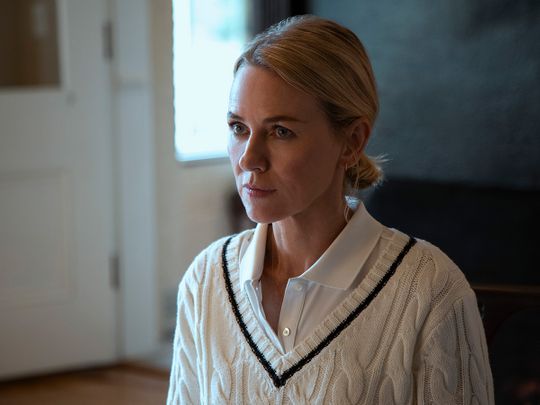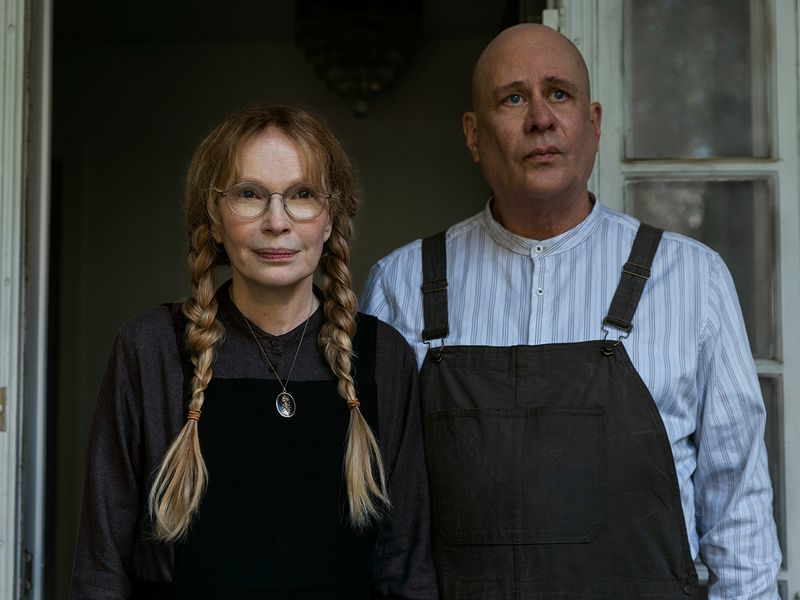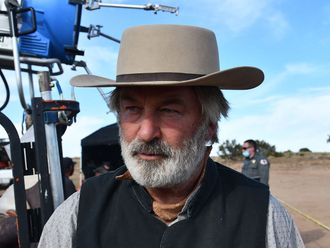
In the fall of 2018, New York magazine published an engrossing account of the nightmare that unfolded after Derek and Maria Broaddus bought what they thought was their dream home in the leafy suburb of Westfield, New Jersey. After beginning renovations at 657 Boulevard, the couple began receiving creepy letters from an anonymous person who dubbed themselves “the Watcher.” The writer made references to “young blood” and showed they were familiar with the family’s three children, down to their names and birth order. The letters grew increasingly threatening, but the Broadduses found little recourse, even as they reported the letters to the local police department and hired a private investigator to look into the bizarre matter.
Last week, Netflix brought the still-unsolved mystery to its platform via Ryan Murphy, the prolific producer behind ‘American Horror Story,’ ‘American Crime’ and, perhaps his most controversial outing, the recent ‘Dahmer: Monster - The Jeffrey Dahmer Story.’
‘The Watcher’ is a classic Murphy production: campy, over-the-top and full of recognisable faces - Margo Martindale! Mia Farrow! Jennifer Coolidge! - amid its ensemble cast. Bobby Cannavale and Naomi Watts play the couple at the centre of the storm, whose names have been changed for the series to Nora and Dean Brannock. In this retelling, the Brannocks have two children, 16-year-old Ellie (Isabel Gravitt) and her younger brother Carter (Luke David Blumm), and a host of kooky neighbors who double as suspects.

Just like the story that inspired the series, ‘The Watcher’ is about more than just the frightening letters. Let’s examine some of the larger themes lurking beneath the show’s surface.
Greed
The elusive American Dream is at the center of ‘The Watcher’ as the Brannocks - a decade removed from a bankruptcy filing - are accused of greed in the menacing letters. The series pulls in verbatim passages from the letters that appeared in the magazine story by Reeves Wiedeman, so there are a number of scenes featuring Watts and Cannavale furrowing their brows over typed correspondence. “Do you need to fill the house with the young blood I requested? Better for me,” one excerpt from the Watcher reads. “Was your old house too small for the growing family? Or was it greed to bring me your children? Once I know their names I will call to them and draw them too [sic] me.”
The Brannocks also face scrutiny from their community, as some in the enclave refuse to believe anyone would disturb the safety of their neighbourhood. Both the couple’s real estate agent, Karen (Coolidge), and a police detective (Christopher McDonald) they think is mishandling the case accuse the Brannocks of taking on “too much house” and suggest they wrote the letters themselves to get out of a financial abyss. Pearl Winslow (Farrow), one of the Brannock family’s most eccentric neighbours, judges them harshly for upgrades made to the six-bedroom home. “Butcher block countertops,” she scoffs. “Are you turning your house into a delicatessen?”

Toxic masculinity and White privilege
There’s nothing like a terrible teen to spice up a drama based on real-life events. One subplot of ‘The Watcher’ revolves around tension between Ellie and her overprotective dad, who objects to his daughter dating Dakota (Henry Hunter Hall), an enterprising 19-year-old who sets up security cameras across the Brannocks’ new property. After Dean angrily confronts Ellie and her beau, the teen gets on TikTok and falsely tells her followers that her parents object to her boyfriend because he is Black.
The story-line is a heavy-handed reminder that many people in this largely White town are unaware of their privilege. That fits with Wiedeman’s story, which quotes one woman’s tone-deaf plea at a community meeting: “Our neighborhoods are constantly under attack from turf, lights, parking decks, you name it. If we can’t make a stand on Boulevard, where can we?”
The duplicity of obsession
In an update on the case published last week, Wiedeman reported on the amateur sleuths who have attempted to discern the identity of the Watcher since the article first published. The reporter cites a 19th-century short story by Irish author J. Sheridan Le Fanu - about a man who goes crazy after receiving threatening letters from someone who called himself the Watcher - as “the closest literary connection anyone could draw.”
In the show, Dean becomes obsessed with finding the Watcher, so much so that his marriage is left hanging by a thread and he appears absolutely unhinged as he accuses various neighbors of sending the letters. Murphy and Co. pull in supernatural elements, including a mysterious character based on John List, a real-life former Westfield resident who murdered his family and covered up his crime so meticulously it was nearly two decades before he was tried and convicted.
The Brannocks eventually (spoiler alert) leave 657 Boulevard, but Dean is incapable of moving on. “I can’t let it go. I can’t just get over it. I feel like someone played a big ... practical joke on us, and I’m never going to know why they did it,” he tells his therapist.













